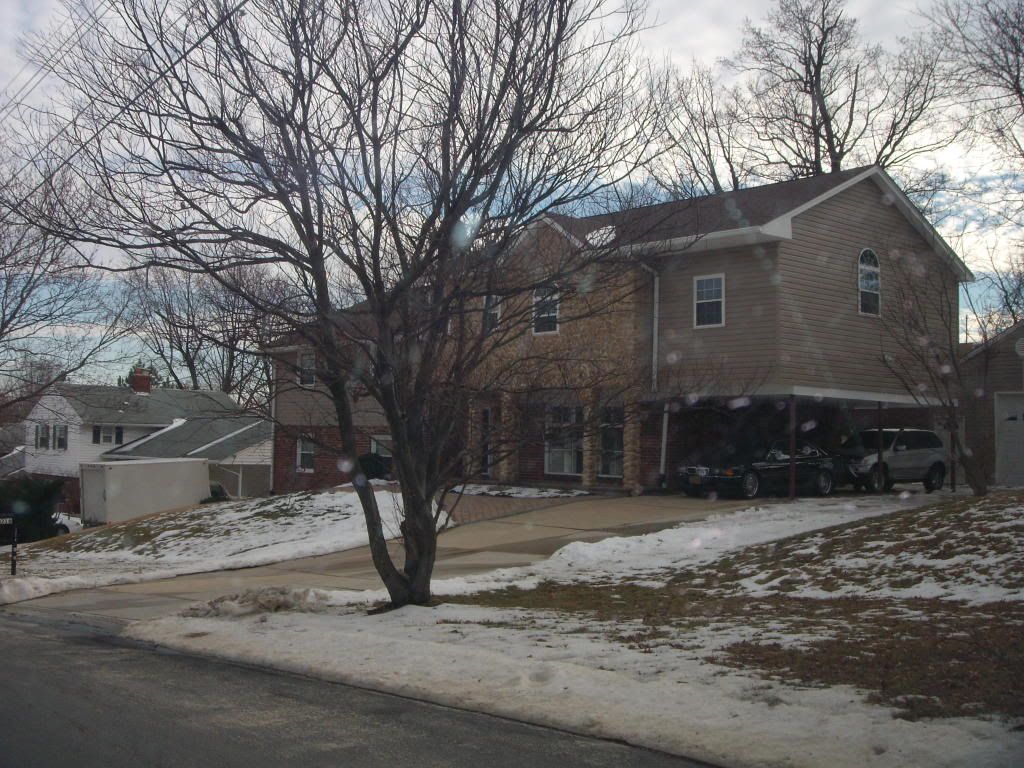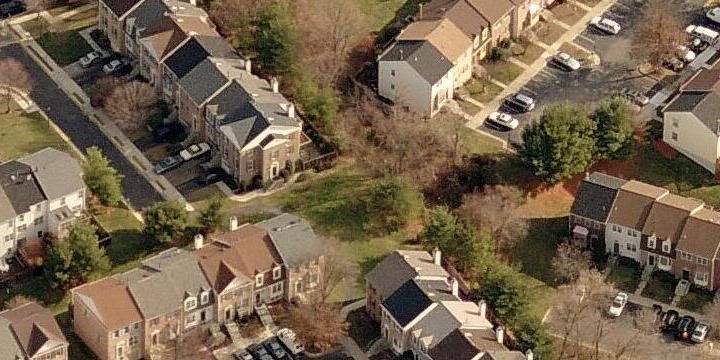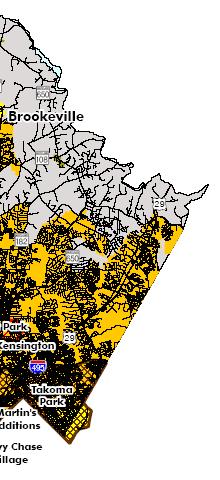 My first question to County Council President Marilyn Praisner (D-Calverton) was about her failed attempt to place a moratorium on new permits in Montgomery County, and it got our conversation off to a bad, bad start. Before I could finish my question, she cut me off: "Nothing 'went down,'" she insists, taking me to task for my unusual word choice. "Moratorium was and is a misnomer."
My first question to County Council President Marilyn Praisner (D-Calverton) was about her failed attempt to place a moratorium on new permits in Montgomery County, and it got our conversation off to a bad, bad start. Before I could finish my question, she cut me off: "Nothing 'went down,'" she insists, taking me to task for my unusual word choice. "Moratorium was and is a misnomer.""I sought to accomplish a focus on trying to respond to the inadequacies of our Annual Growth Policy," she explains. "We've provided such a grace period that there's a lag time" between when policies are created and when they are implemented. Not taking building permits for six months would have allowed that lag time to disappear, she says.
Councilman George Leventhal (D-At Large) said that incidents such as these were signs that his fellow councilmembers thought they were "responding to the people" in their push to slow growth. It's a sign, he said, that citizens' groups such as the Neighbors for a Better Montgomery really are as influential as the media make them out to be.
However, Praisner says that she hears a lot more from developers than from real people. I asked her about what both Leventhal and Nancy Floreen called the "activists," the citizen groups who lobby her office on a regular basis. "You mean developers and their attorneys?" she spits. "I mean Drew Powell and Jim Humphreys from Neighbors for a Better Montgomery," I say.
"What do you have against the Neighbors for a Better Montgomery?" she asks, incredulous. I read the quote from Where Are The Brakes that George Leventhal had famously contested a few months ago: "We must break from the traditional view that growth is inherently good . . ." but Praisner was unimpressed. "I can't comment on it," she says. "I don't think that's accurate."
"I've never seen [Powell and Humphreys] in here. Most folks who come in are the lawyer for a development who wants to brief you on their plan."
Building Community
 Marilyn Praisner is often cast by people familiar with County politics as the congenial "grandma" of the County Council, one of its oldest members and, for that matter, a long-time resident of a county where most people have only lived for a couple of decades. Forty years ago, a newly married Praisner was encouraged by some friends to visit Calverton, a new development going up on former farmland six miles out of Silver Spring. Thinking it "looked like a good family community," Praisner and her husband moved into a house on Shanandale Drive and never left.
Marilyn Praisner is often cast by people familiar with County politics as the congenial "grandma" of the County Council, one of its oldest members and, for that matter, a long-time resident of a county where most people have only lived for a couple of decades. Forty years ago, a newly married Praisner was encouraged by some friends to visit Calverton, a new development going up on former farmland six miles out of Silver Spring. Thinking it "looked like a good family community," Praisner and her husband moved into a house on Shanandale Drive and never left.Praisner became involved in the community, serving as a Girl Scout Leader, an officer in the Calverton Citizens Association, and president of the Banneker Junior High PTSA. From there, she sat on the school board for eight years and, in 1990, she ran for County Council and won. After nearly two decades of service, she is now council president.
If there's anyone in Montgomery County who embodies community service, it would have to be Marilyn Praisner, who's stood by her neighborhood through forty years of change. And the word "community" becomes a recurring theme as she talks about the future of East County.
"We need to look more at the vision of building communities," Praisner says, "using more of the tools available to help us look at the vision. A 'creative discussion process.'" (Did you understand that? I didn't.) While Fairfax County's new role as "second center" for the D.C. region has some worrying that Montgomery's falling behind, Praisner brushes it off. "I would take Montgomery County any day," she insists. "[Fairfax] doesn't work as a community." Maybe the suburban sprawl and mess of highways are off-putting, but I feel like a place where people can live and work in the same location is more of a community where the jobs-housing imbalance is making long commutes increasingly common.
Making Connections
 ABOVE: Dead-end roads in the Tanglewood development.
ABOVE: Dead-end roads in the Tanglewood development.As most in East County know, our local sense of community is hindered by the lack of connecting roads. Marilyn Praisner lives a quarter-mile from me, but without any access between her neighborhood and mine, walking to her house would be impossible. "One of my biggest frustrations for the area between Route 29 and I-95 is the lack of the development of a good infrastructure for connecting roads," Praisner laments. It has a lot to do with the County line. In 1968, Montgomery and Prince George's counties drew up a master plan for the area between Route 29 and Route 1, dubbed the Fairland-Beltsville Plan, but it has since been abandoned. "The border is a challenge in dealing with governments," Praisner says. "It's hard to get around." (Literally.)
 On the Montgomery County side, at least, Praisner says some attempts have been made to improve connectivity, such as the interchanges being built on Route 29 (at left), but it's the natural barriers that make the process most difficult. East County is traversed by the Paint Branch and its tributaries, which has some of the cleanest water and healthiest trout populations in the state.
On the Montgomery County side, at least, Praisner says some attempts have been made to improve connectivity, such as the interchanges being built on Route 29 (at left), but it's the natural barriers that make the process most difficult. East County is traversed by the Paint Branch and its tributaries, which has some of the cleanest water and healthiest trout populations in the state."The East County is some of the most environmentally sensitive areas" in the county, Praisner notes. Connections like the Palermo-Pretoria Bridge, a pedestrian bridge in Calverton that crosses a tributary of the Paint Branch running through a concrete channel, would be impossible to build with today's environmental standards, meaning that many disconnected East County neighborhoods shall remain so.
Nonetheless, Marilyn Praisner seems positive on the present and future of East County. The FDA campus, currently under construction, will "continue to have an influence on the kinds of businesses that will want to locate" in East County, states Praisner, adding, "We have a good mix of people from a standpoint of economics as well as ethnic diversity." That won't change any time soon.
 "I don't see gentrification happening on the east side." she says, somewhat contradicting Ike Leggett's concern that the residents of affordable apartments in Briggs Chaney and White Oak may be pushed out by higher-end development. "The focus of development [is] in other areas of the County. East County is not a Smart Growth area."
"I don't see gentrification happening on the east side." she says, somewhat contradicting Ike Leggett's concern that the residents of affordable apartments in Briggs Chaney and White Oak may be pushed out by higher-end development. "The focus of development [is] in other areas of the County. East County is not a Smart Growth area."In fact, that couldn't be further from the truth. A map of Maryland Priority Funding Areas (at right) places where the State provides public funding to encourage Smart Growth projects - shows that the entire Route 29 corridor south of Route 198, with the exception of some rural pockets in Colesville and Cloverly, is eligible for Smart Growth funding.
The More Things Change, The More They Stay The Same
While Marilyn Praisner feels confident in the status quo in East County, it's only because she likes this area so much. There may be some of a stigma to the east side, but that shouldn't set us apart from the rest of Montgomery County. She asks why I haven't made appointments to meet with Mike Knapp or Phil Andrews, councilmen representing the Upcounty and Rockville, respectively, and I say that they're pretty far away from here.
"Folks tend to get the perception that their corner of the County is unique," Praisner says, "when we all have the same problems." It takes someone who's been around long enough to know when all of Montgomery pretty much looked the same - white and rural - to make a statement that, even after forty years of growth, still rings true.

No comments:
Post a Comment